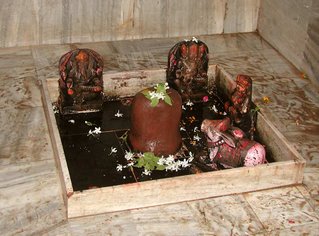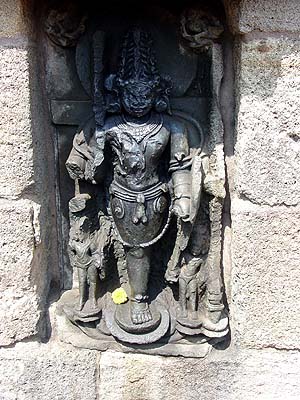
(Click the image for a larger view)
Radha Kunda, Uttar Pradesh:
Walking down a street, and knowing nothing about the place brings with it a whole new experience of the unfamiliar. With the wind in the air and the warm sun shining down on a chilly morning searching for the story that rules the minds of a charming little town can quite be a task.
Armed with a book in hand that gives the basic directions, and then looking expectantly at all the local faces hoping to get more information, its a silent walk down an unknown alley.
This is a small town with no pollution in the air, clear breath warmed by the sun as I sip at a glass of local Chai looking around at people going about their business. Simple people, with lots of goodwill and warmth and no corruption that looks for my wallet, or so I hope!
It’s a quaint little town, completely charming, the old forgotten India that one would have loved to see. The town dotted with temples, with flags flying high still symbolizing victory against time through so many centuries, singing the praise of Radhe Shyam and slowly begins to unravel herself.
This is a land precious to Gaudiya Vaishnavas, hosting the great ponds of Radha Kunda and Shyama Kunda that sing the tales of Krishna killing the demon bull Aristhasura. On the pilgrimage tracks to Mount Govardhana, this town is not too far from Mathura. This little town hosts 5 dead trees that represent the Pandavas singing Bhajan. Folklore has it that Dharamaraja Yudhistira appeared in the dream of Raghunatha Dasa Goswami and directed him not to cut the trees on the banks of the Shyama kunda while he reconstructed the ponds. This is the land of Sri Chaitanya Mahaprabhu, that sings about the pleasure times of Radha and Shyam.
A small town that hosts the kunjas (garden groves) of the 8 main sakhis - Sri Lalita Sakhi (north), Sri Vishakha Devi (north east), Sri Chitra Devi (east, multi colored), Sri Indulekha Devi (south east, all white), Sri Champakalatha devi (south, gold), Sri Ranga Devi (South west, Shyama blue), Sri Tungavidya Devi (west, crimson), Sri Sudevi Devi (northwest, green) and their respective Sakhas Madhumangala (north), Ujjvala (north east), Arjuna (east), Gandharva (south east), Vidagdha (south), Kokeela (south west), Sanandananda (west), and Subala (north west).
Well I can almost here the jingle of anklets and the laughter of damsels and the happiness and joy of love once displayed among these blooming gardens into a world of colour and enjoyment. A little town so peaceful later ravaged by war and yet retaining it’s original splendor now singing folklore of Radhe Shyam.

(Click the image for a larger view)
And here too, Lord Shiva resides. A small white marble temple, attributed to Sri Kundeswar Mahadev on the roadside is not as small and insignificant as it would seem. There are four such temples, each in a cardinal direction protecting Radha Kunda from the uninitiated. No one gets to Radhakunda if Lord Shiva doesn't permit him or her to do so. Therefore it is tradition that one visits Sri Kundeswar Mahadev temple first before setting foot into this holy land of the Gaudiya Vaishnavas.
Jai Bholenath!
Photo courtesy: http://www.vaisnava.cz/ind_en.html
The Hare Krishna inspiration © 2001-2007


















